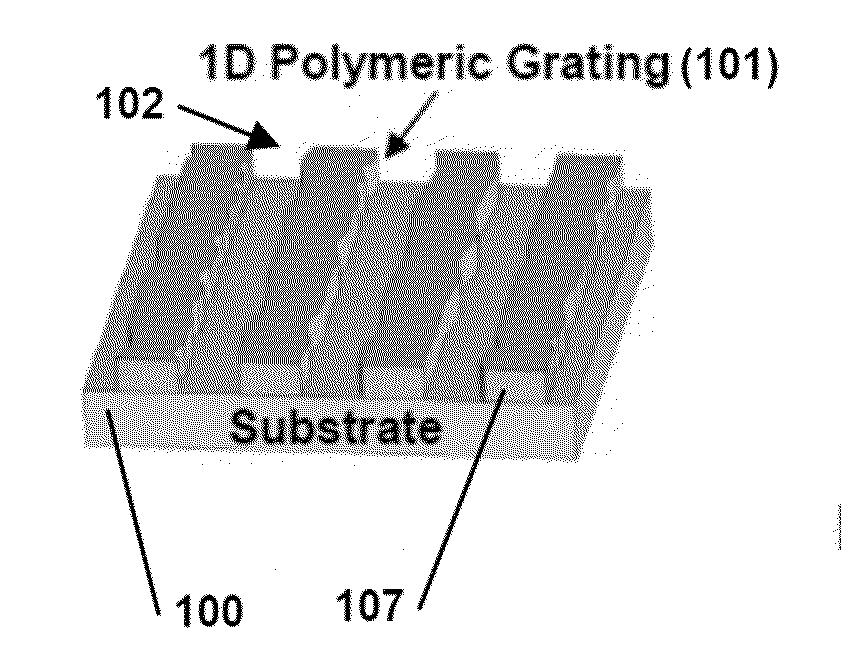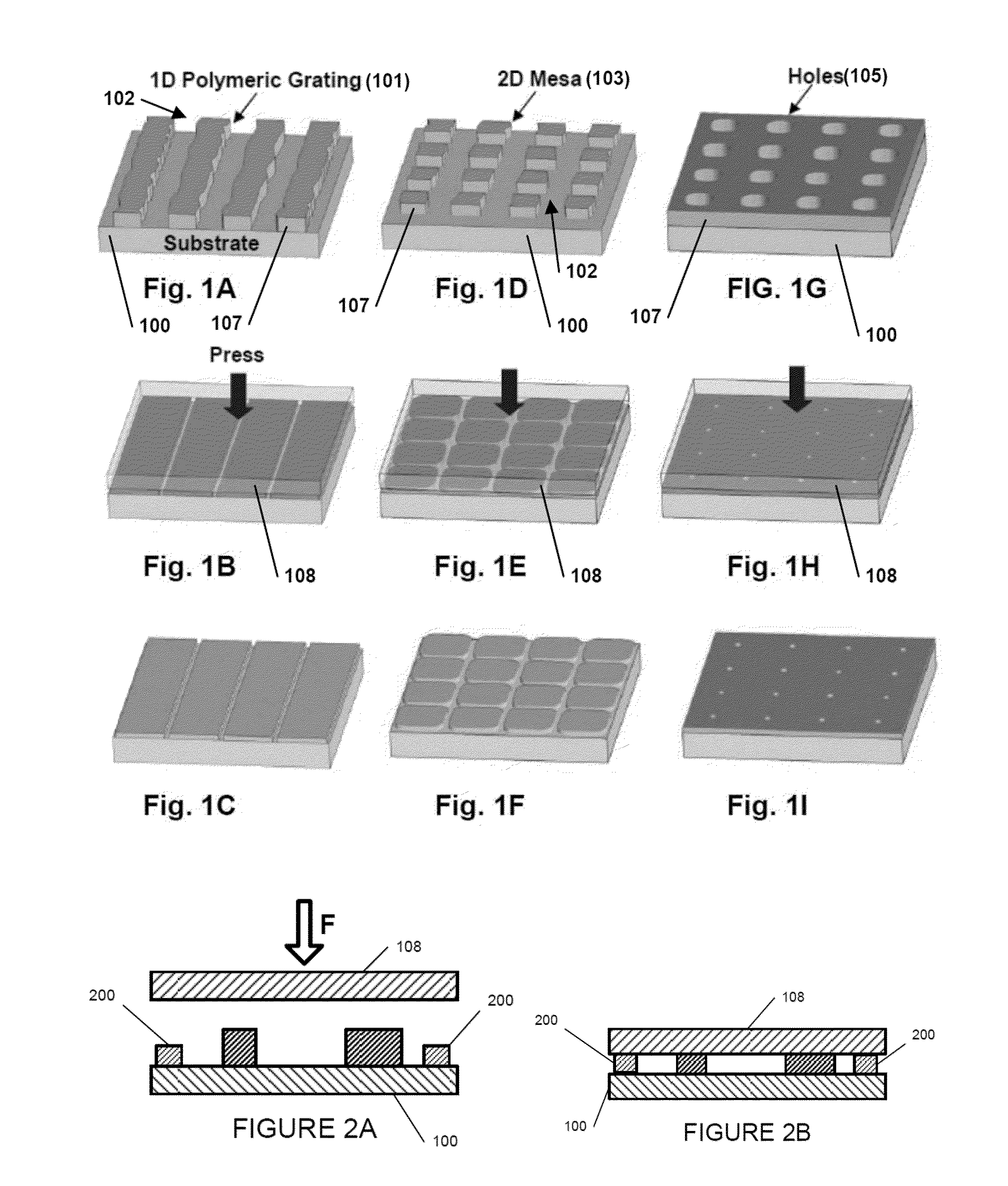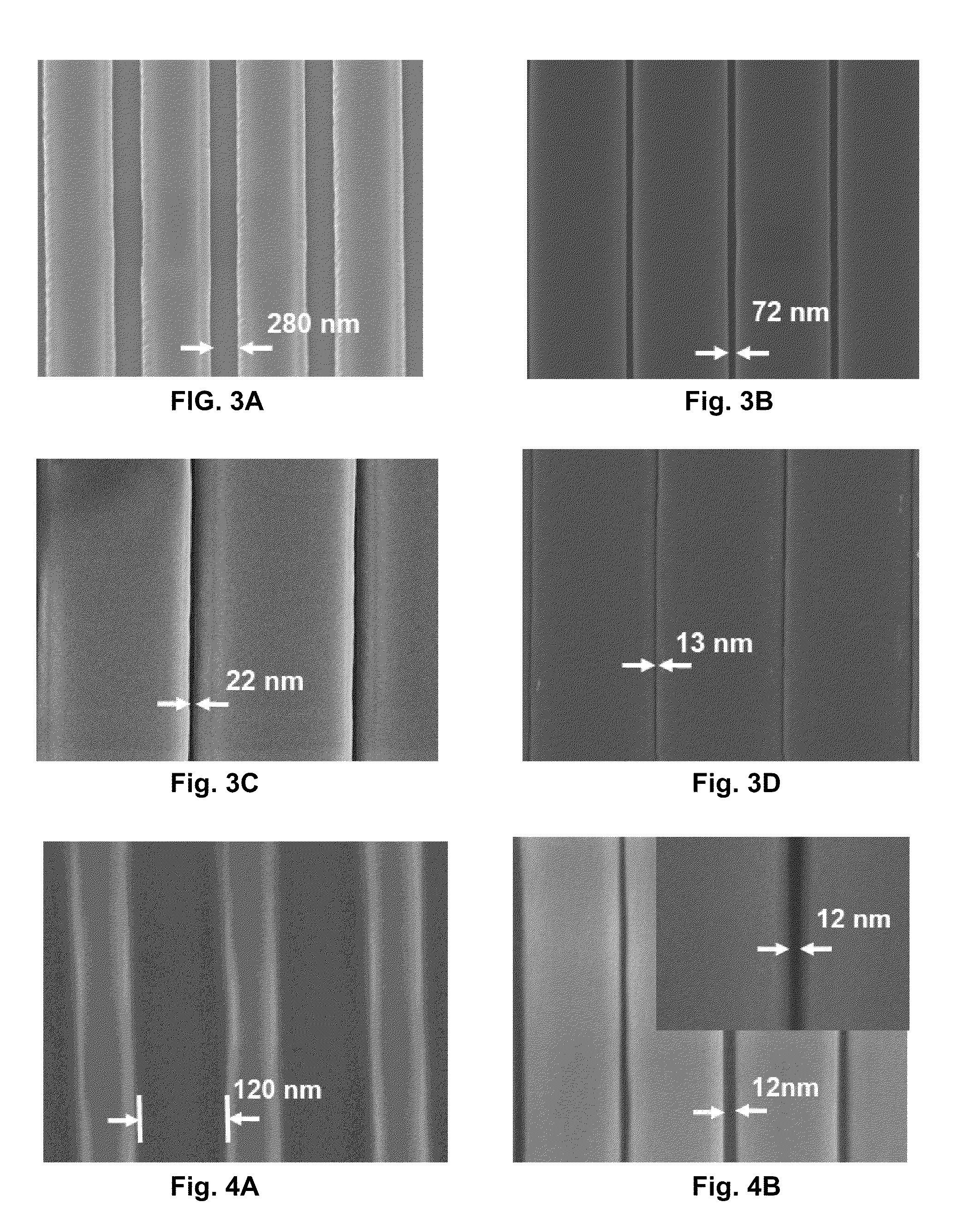Process for adjusting the size and shape of nanostructures
a nanostructure and nano-structure technology, applied in the field of nano-scale devices manufacturing, can solve the problems of reducing the lateral dimension etc., and achieve the effects of reducing the lateral dimension of micro-scale devices on substrates, reducing the lateral dimension of line spacing or the size of holes, and increasing the size of mesas
- Summary
- Abstract
- Description
- Claims
- Application Information
AI Technical Summary
Benefits of technology
Problems solved by technology
Method used
Image
Examples
examples
[0046]We have demonstrated P-SPEL in thermoplastic polymer nanostructures on Si or SiO2 substrates. The initial nanostructures were fabricated using thermal nanoimprinting for patterning and Reactive Ion Etching (RIE) for removing the residue resist layer (at the bottom of recessed nanostructures). We used a Si wafer with a featureless smooth surface as the guiding plate and used an Air Cushion Press TM (Nanonex NX-2000 imprinter) or a parallel plate press to press the samples. Preferably the pressing is highly uniform as could be obtained by using direct fluid pressure to press together the guiding plate and the substrate. See U.S. Pat. No. 6,482,742. The final gap between the guiding plate and the substrate was controlled by processing time (since a material flow takes time) in most our experiments. A micro-stopper was used in some cases.
[0047]FIG. 3 shows the results of P-SPEL on the grating lines made of a linear acrylate polymer (a thermoplastic with a glass transition temperat...
PUM
| Property | Measurement | Unit |
|---|---|---|
| Length | aaaaa | aaaaa |
| Thickness | aaaaa | aaaaa |
| Thickness | aaaaa | aaaaa |
Abstract
Description
Claims
Application Information
 Login to View More
Login to View More - R&D
- Intellectual Property
- Life Sciences
- Materials
- Tech Scout
- Unparalleled Data Quality
- Higher Quality Content
- 60% Fewer Hallucinations
Browse by: Latest US Patents, China's latest patents, Technical Efficacy Thesaurus, Application Domain, Technology Topic, Popular Technical Reports.
© 2025 PatSnap. All rights reserved.Legal|Privacy policy|Modern Slavery Act Transparency Statement|Sitemap|About US| Contact US: help@patsnap.com



